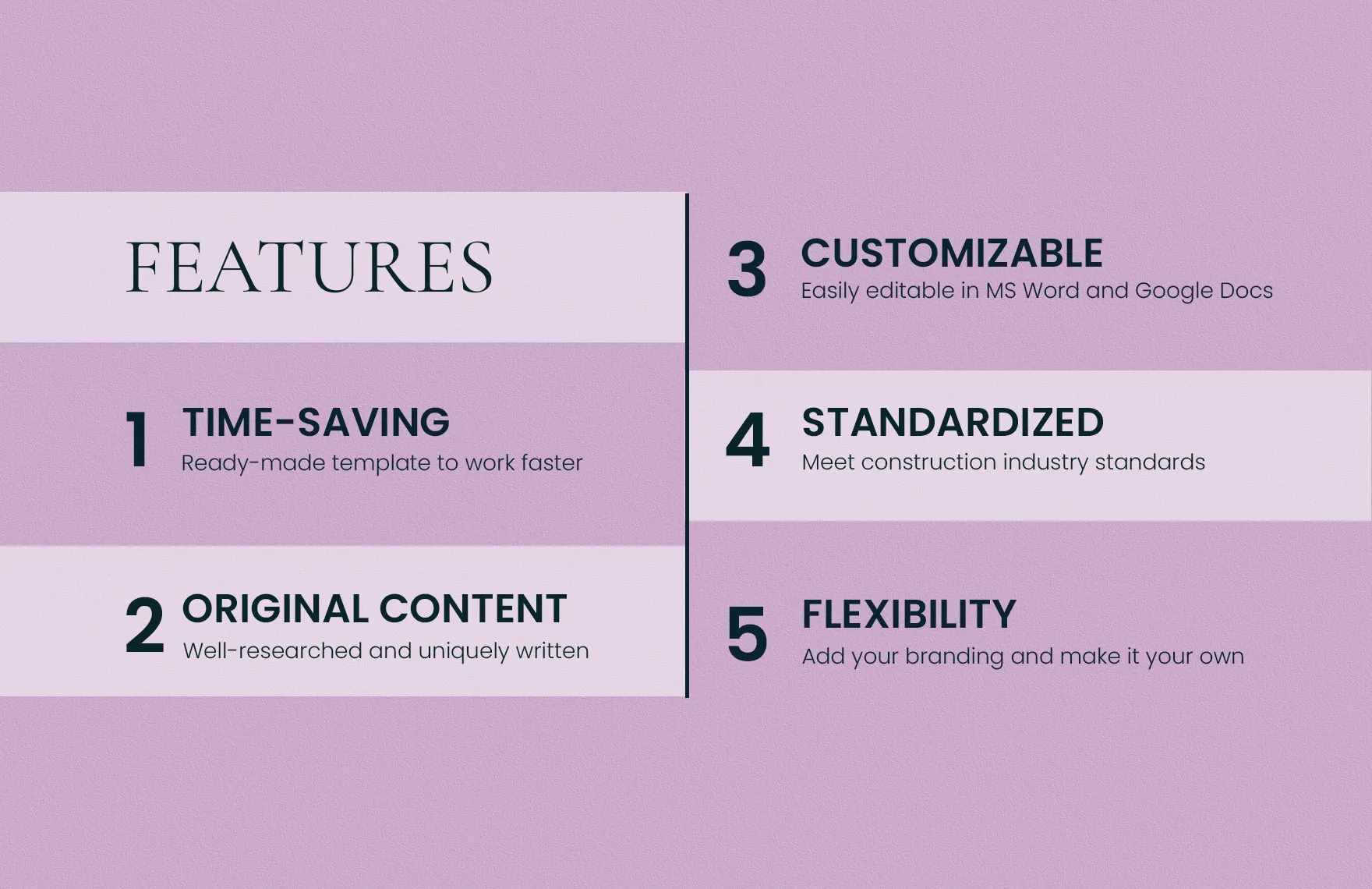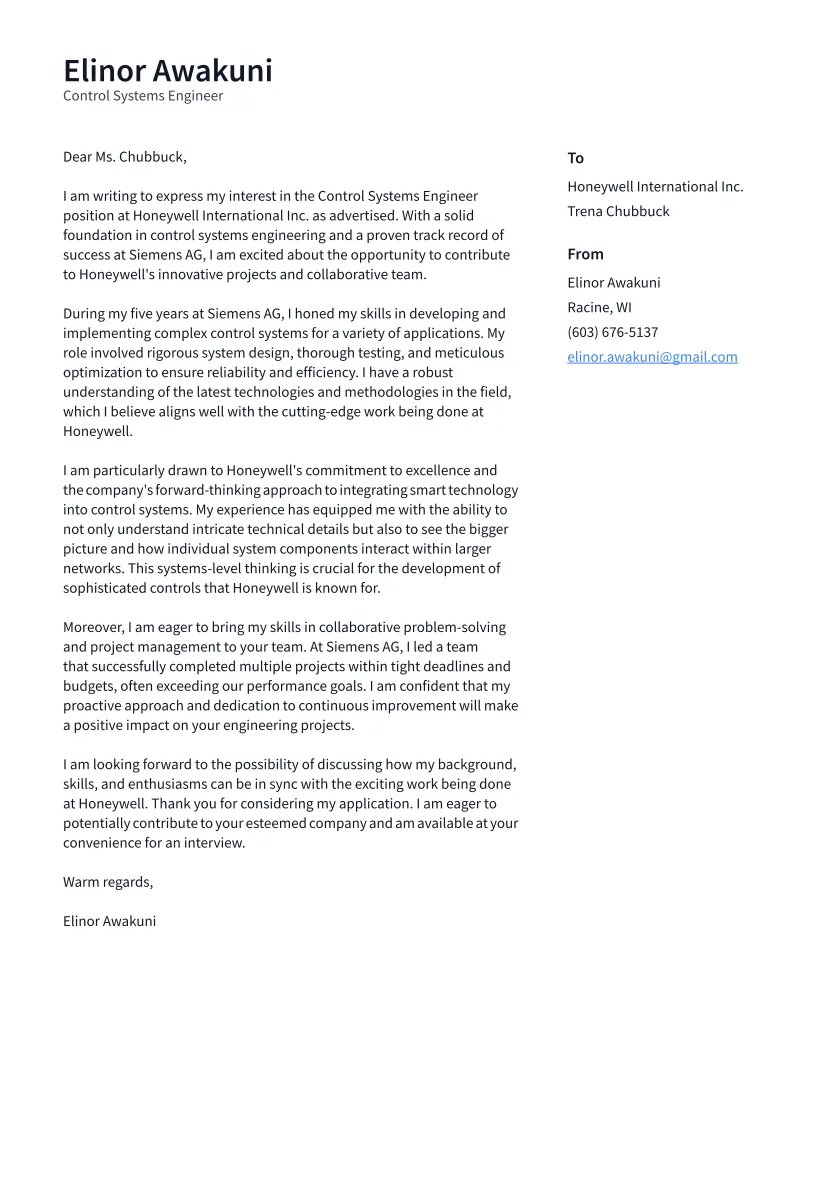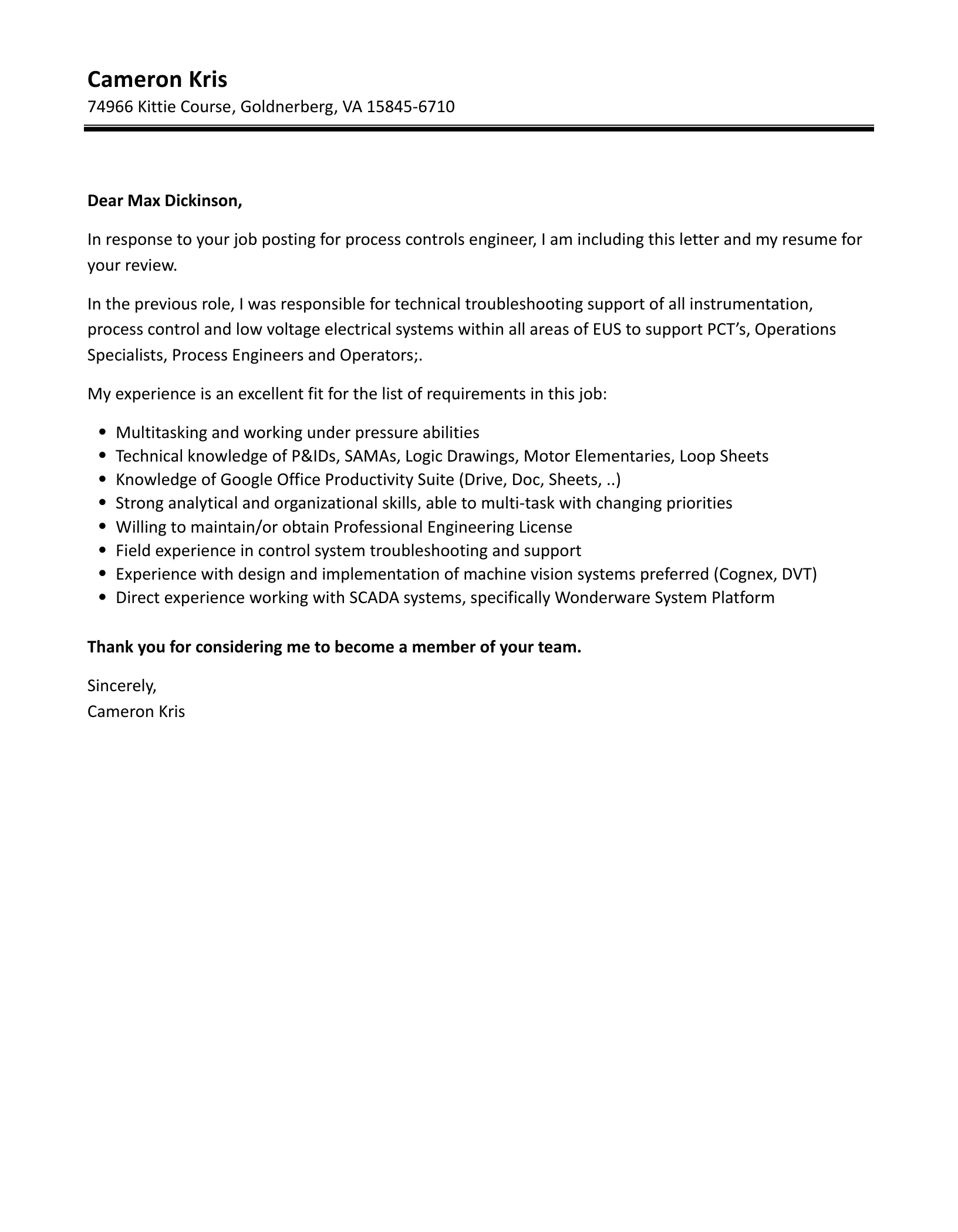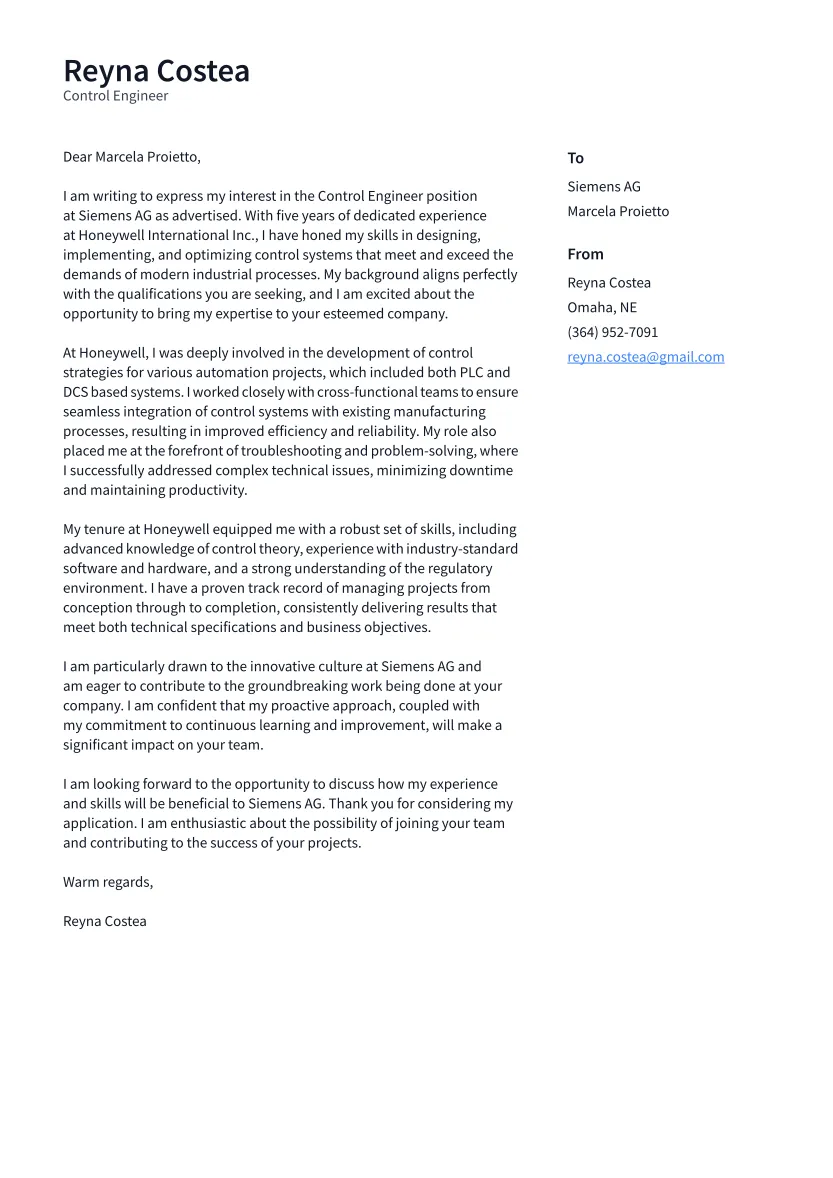Essential Components of a Controls Engineer Cover Letter
A well-crafted cover letter is your first opportunity to make a strong impression on a potential employer. For a Controls Engineer, this document is not just a formality; it’s a crucial tool to showcase your skills, experience, and enthusiasm for the role. Your cover letter complements your resume, providing a space to elaborate on specific projects, highlight your achievements, and demonstrate your understanding of the company’s needs. It’s vital to treat your cover letter as a personalized narrative that sells your qualifications, making it clear why you are the perfect candidate for the position. This section will dive into the essential elements that constitute a compelling cover letter, ensuring it stands out from the competition and grabs the attention of the hiring manager.
Contact Information and Salutation
Begin your cover letter by providing your contact information, including your name, address, phone number, and professional email address. Ensure this information is accurate and easily accessible. Following this, address the hiring manager or the specific contact person mentioned in the job posting. If a name is not provided, research the company to find the appropriate person to address your letter to. Avoid generic greetings like “To Whom It May Concern.” Instead, use “Dear Mr./Ms./Mx. [Last Name],” or a similar personalized greeting. This personal touch shows you’ve taken the time to research the company and the position. A well-crafted salutation sets a professional tone from the start and demonstrates your attention to detail.
Formatting Your Cover Letter

The formatting of your cover letter plays a significant role in its readability and professional appearance. Use a standard, easy-to-read font such as Arial, Times New Roman, or Calibri, with a font size between 10 and 12 points. Maintain consistent margins (typically one inch on all sides) and use single or 1.15 line spacing to make your letter visually appealing. Break up large blocks of text into shorter paragraphs to improve readability. Use bullet points to highlight key skills or achievements, making it easy for the hiring manager to quickly grasp your qualifications. Ensure that your letter is free of grammatical errors and typos by proofreading meticulously and using spell-check tools. A clean and well-formatted cover letter reflects your professionalism and attention to detail.
Highlighting Your Technical Skills
As a Controls Engineer, your technical skills are paramount. In your cover letter, clearly outline the specific skills that align with the job requirements. These may include experience with Programmable Logic Controllers (PLCs), Supervisory Control and Data Acquisition (SCADA) systems, Human-Machine Interfaces (HMIs), and various programming languages like ladder logic, C++, or Python. Mention any experience with industrial networks, robotics, or process automation. It’s important to go beyond listing your skills; provide brief examples of how you’ve utilized these skills in past projects. For example, if you have experience with PLC programming, describe a project where you successfully implemented a control system using a specific PLC platform, highlighting the challenges you overcame and the results you achieved. This approach demonstrates that you not only possess the skills but also know how to apply them effectively.
Emphasizing Relevant Experience
Your cover letter should prominently feature your relevant experience. Focus on the roles and projects that are most aligned with the job description. For each position you mention, include the company name, your job title, and the dates of employment. Provide a concise overview of your responsibilities and achievements. Instead of simply listing your duties, describe your role in specific projects and the outcomes you helped achieve. For instance, if you were involved in designing a new control system, explain the scope of the project, the technologies you used, and the benefits that resulted from your work, such as improved efficiency, reduced costs, or enhanced safety. Tailor your descriptions to match the language used in the job posting, using similar keywords and phrases to demonstrate that you are a strong fit for the role.
Quantifying Achievements

One of the most effective ways to make your cover letter stand out is by quantifying your achievements. Instead of making general statements about your abilities, provide specific, measurable results. For example, instead of saying “Improved system performance,” state “Improved system performance by 15% through optimized PLC programming, resulting in a 10% reduction in energy consumption.” Use numbers, percentages, and specific data points to demonstrate the impact of your work. Did you reduce downtime, increase production, or save the company money? Provide the figures. This approach not only validates your claims but also gives the hiring manager a clear understanding of the value you can bring to their organization. Quantifiable achievements make your cover letter more compelling and memorable.
Tailoring to the Specific Job
A generic cover letter will not impress a hiring manager. It’s essential to tailor each cover letter to the specific job you’re applying for. Carefully review the job description and identify the key requirements, skills, and qualifications the employer is seeking. Then, customize your cover letter to directly address these points. Highlight the experiences and skills that align most closely with the job requirements. Use keywords from the job description to show that you understand the role and what the company is looking for. Explain how your background and expertise make you a perfect fit for the position. This demonstrates that you have taken the time to understand the company’s needs and that you are genuinely interested in the specific opportunity. Tailoring your letter significantly increases your chances of getting noticed.
Showcasing Problem-Solving Abilities
Controls Engineers are often called upon to solve complex problems. In your cover letter, demonstrate your problem-solving abilities by providing examples of how you have successfully tackled challenges in past projects. Describe the specific problem you faced, the steps you took to analyze the situation, the solutions you developed, and the outcomes you achieved. For example, you might explain how you troubleshooted a malfunctioning control system, identified the root cause, and implemented a fix that restored the system’s functionality. Use the STAR method (Situation, Task, Action, Result) to structure your examples, making them clear, concise, and impactful. Highlighting your problem-solving skills showcases your ability to think critically, analyze issues, and implement effective solutions, making you a valuable asset to any engineering team.
Demonstrating Knowledge of Relevant Software and Technologies

In addition to highlighting your general technical skills, it is crucial to specify the software and technologies you are proficient in. Controls Engineers work with a wide array of tools, including PLC programming software (e.g., Allen-Bradley, Siemens), SCADA systems (e.g., Wonderware, GE Proficy), HMI software, and simulation tools. In your cover letter, list the specific software and technologies you are familiar with. If the job description mentions particular software, make sure to emphasize your experience with those tools. Briefly describe how you have used these tools in your projects. For example, you could say, “Proficient in programming Allen-Bradley PLCs using Studio 5000 software, I successfully implemented…” This targeted approach shows that you possess the specific expertise the employer is looking for, increasing your chances of getting an interview. Mention any experience with industry-specific standards or protocols.
Expressing Enthusiasm and Professionalism
Your cover letter should convey your enthusiasm for the opportunity and your interest in the company. Demonstrate your passion for Controls Engineering and your eagerness to contribute to the organization. Research the company and tailor your letter to show you understand its mission, values, and goals. Explain why you are drawn to the specific role and what aspects of the company or the job excite you. Maintain a professional tone throughout your letter. Use clear, concise language, and avoid slang or informal language. Proofread your letter carefully to ensure it is free of errors. Showcasing your enthusiasm and professionalism makes a positive impression and demonstrates that you are not only qualified but also genuinely interested in the position, significantly increasing your chances of success.
Closing and Call to Action
Conclude your cover letter with a strong closing statement that summarizes your key qualifications and reiterates your interest in the position. Thank the hiring manager for their time and consideration. Include a clear call to action, such as “I am eager to discuss my qualifications in more detail and am available for an interview at your earliest convenience.” Provide your contact information again, making it easy for the hiring manager to reach you. Express your enthusiasm one last time, and thank them for their time. This final touch leaves a positive impression and prompts the hiring manager to take the next step in the hiring process.
Proofreading and Editing

Before submitting your cover letter, thoroughly proofread and edit it. Errors, typos, and grammatical mistakes can damage your credibility and detract from your qualifications. Carefully check for any spelling errors, grammatical errors, and punctuation mistakes. Ensure that your sentences flow smoothly and that your letter is well-organized and easy to read. Consider having a friend or colleague review your cover letter for a fresh perspective. They can catch errors you may have missed and provide valuable feedback on your writing style and content. Proofreading is an essential step in the application process and ensures that your cover letter reflects your professionalism and attention to detail. A polished cover letter is more likely to impress and lead to an interview.
